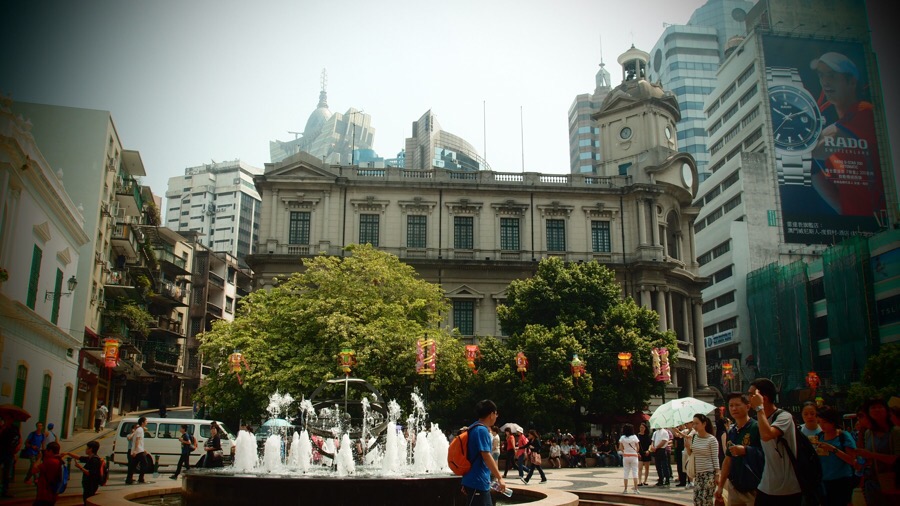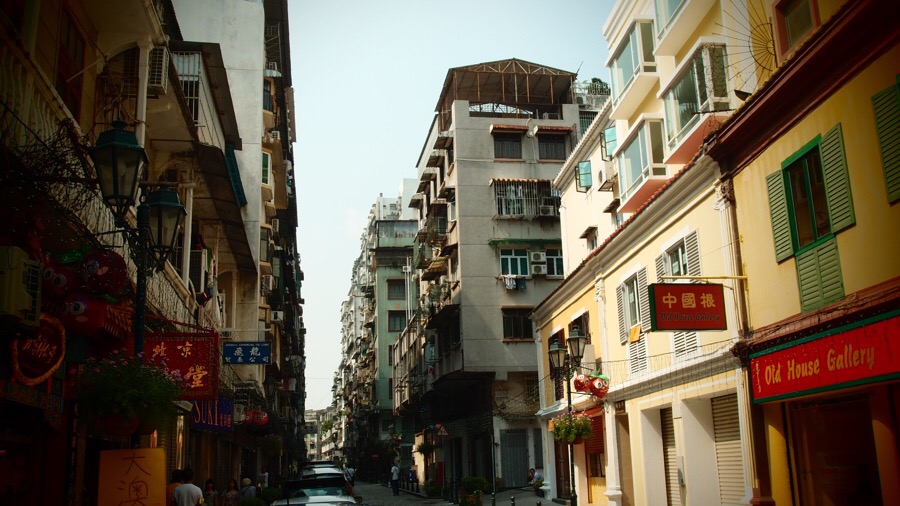2012 Hong Kong and Macau Trip
Not Quite China, But Close
A two-hour ferry ride from Hong Kong takes you to Macau. Despite the proximity and both being part of the Chinese cultural sphere, the two places have distinctly different vibes. Hong Kong was a British colony, while Macau was under Portuguese rule, which gives each place its own unique atmosphere. It's fascinating to think about how, back then, the British and Portuguese embarked on long voyages to establish colonies in such distant and unknown lands—a testament to their determination.
Upon arriving at the Macau harbor, you can catch a free shuttle bus to the city center, heading towards the Lisboa Casino. However, once you get off the bus, you have to walk through the casino to reach the outside. The air inside was thick, almost suffocating, with the heavy scent of cigarettes. Since I was already there, I decided to try my luck and pulled the lever on a slot machine—just once. I lost instantly, so I didn’t try again.

@Senado Square
Senado Square is the bustling heart of Macau and a must-visit for any tourist. The square feels more European than Asian, with its classic architecture and cobblestone streets. As it was time for a meal, I noticed a long line at a food stall and decided to try what everyone else was having—a kind of Macau-style fish ball soup. Little did I know, this would be my last meal in Macau that day.
When it was time for a meal, I noticed a long line at a food stall and decided to join in. It was some kind of Macau-style fish ball soup
And it ended up being my last meal in Macau that day...
@St. Paul’s church
The Ruins of St. Paul’s, a 17th-century Portuguese church, is one of Macau’s most famous landmarks. It was incredibly crowded and the heat made it hard to fully enjoy the site.
The Ruins of St. Paul's is a UNESCO World Heritage site and a symbol of Macau's rich history. Originally built in the early 17th century by Jesuit missionaries from Italy, it was once the largest European-style cathedral in Asia. However, a devastating fire in 1835 left most of the structure in ruins, with only the facade, some walls, steps, and the basement surviving today. Despite losing much of its original grandeur, it remains one of Macau's most visited landmarks.
The Baroque-style facade is adorned with four bronze statues of Jesuit saints on the second level, a statue of the Virgin Mary on the third, and a meticulously carved dove, symbolizing the Holy Spirit, at the very top. Beneath the ruins lies the Catholic Art Museum, where visitors can explore a model of the original cathedral, along with religious paintings and artifacts.
Sourced from triple.com

Wandering through Macau’s alleyways, visiting local temples, and passing by fish markets along the coast, I found myself walking without a particular destination in mind. At one point, my navigation app stopped working, making it difficult to find my way around. Surprisingly, despite Macau’s association with casinos, many people I encountered were unfamiliar with the Lisboa Casino.
After what felt like an aimless stroll, I realized I had walked across the entire Macau Peninsula. Macau is so compact that you can easily explore it on foot. In the neighborhoods, I often saw locals gathered around, playing what seemed to be Mahjong.
There are photos shows bus No.10 route and interior. It's quite clean.
Eventually, I returned to the Lisboa Casino to catch the shuttle bus back to the ferry terminal.
To my surprise, the terminal was packed, and I barely managed to secure a ticket for the 9 PM ferry. The long wait reminded me of my earlier experience with the Peak Tram in Hong Kong. I made a mental note: avoid traveling to Greater China during Lunar New Year. It felt like I hadn’t done much in Macau, yet so much time had slipped away.
Back in Tsim Sha Tsui, I walked along Nathan Road to my accommodation. I can’t even remember if I had dinner that night—I have a feeling I might have skipped it.


댓글
댓글 쓰기